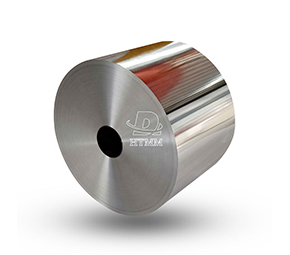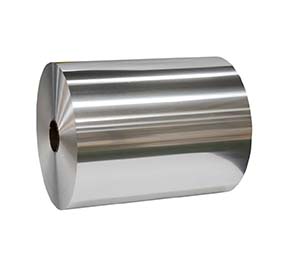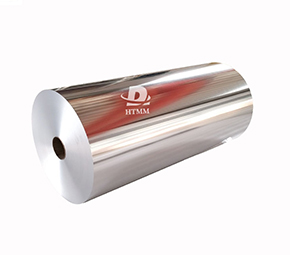In the production of aluminum containers, is it common to face issues like foil cracking during stamping, surface abrasions, or inadequate sealing performance? Why can some Aluminum Foil For Aluminum Containers withstand high-temperature baking at 220 ℃, while others start to deform at 180 ℃? Why do some batches feed automatically smoothly and quietly, while others frequently get stuck? The reasons behind these differences often lie in the fact that the material selection fails to fully match the actual demands of high-speed and precision manufacturing. If any parameter of the aluminum foil, such as its thickness, alloy or lubrication, deviates slightly, the yield of the finished product may drop significantly.
3003 H24 Lubrication Aluminum Foil is designed for high quality aluminium container design engineering materials, especially in the fine control over 50 Micron specifications, can effectively support the efficient and stable production rhythm. The following text will focus on introducing its core features, application advantages and key role in the field of aluminum containers.
Classified under the aluminum-manganese series, the 3003 alloy is recognized for its excellent balance of strength and formability. Manganese enhances the material's strength while maintaining good ductility and processing adaptability. The H24 state is obtained through cold working hardening and partial annealing, featuring a moderate yield strength. This enables the container to maintain structural stability after forming, capable of withstanding pressures during cleaning, filling, stacking, and other processes. It also has excellent secondary processing performance such as deep drawing and spinning. Compared with the soft O-state material, the H24 state has better dimensional stability and anti-wrinkle properties. Compared with the fully hard H18 state, it causes less wear on the mold and is easier to control during forming. Edge whitening--a common visual defect in stamped components--is effectively suppressed in 3003 H24 Aluminum Foil despite demanding deformation levels. This alloy is exported to markets in the Middle East, Latin America and other regions with long sea transportation distances and complex environments. It can also resist the risk of pitting corrosion caused by salt spray and is suitable for long-chain logistics that requires "one container to the end".
3003 H24 Aluminum Foil, therefore, is an ideal base material for containers such as lunch boxes, baking molds, and food trays that have high requirements for strength and formability.
During the high-speed stamping process, if the aluminum foil is not lubricated, the metal will come into direct contact with the die, which can easily lead to surface scratches, material breakage, and even production interruption. Increased friction not only raises energy consumption but also brings about a chain reaction such as aluminum chip contamination, frequent mold maintenance and a decline in yield. Lubrication Aluminum Foil uses food-grade lubricants for micron-level coating treatment to form a stable lubricating film between the aluminum foil and the mold. This approach helps achieve a significant reduction in surface friction. The direct effects include a decrease in punching force, a slowdown in equipment wear, a reduction in scratch rate, and controlled generation of aluminum chips. For aluminum container enterprises that rely on continuous high-speed production, lubricating aluminum foil not only improves the yield rate but is also a key element in ensuring the stable operation of the production line. Even if high-quality 3003H24 material is used, it is difficult to exert its due performance without effective lubrication.
The selection of thickness should take into account the strength of the Aluminum Foil For Aluminum Container, food protection, production cost and processing technology comprehensively. Foil used in aluminum containers comes in a wide range of thicknesses, spanning from 6–10 microns for items like chocolate wraps to up to 200 microns for heavy-duty pallet applications. In mainstream household baking scenarios such as cake cups and simple trays, 40-70 micron foil is mostly chosen, among which 50-60 micron is the most common. Lunch boxes and food trays have higher requirements for strength, with a thickness generally ranging from 45 to 90 microns. The Aluminum Foil 50 Micron has become a mainstream specification due to its balance between rigidity and cost-effectiveness. It can not only withstand transportation pressure and stacking weight, but also has the function of blocking light and oxygen to ensure food safety. Compared with thicker one, Aluminum Foil 50 Micron can significantly reduce costs and energy consumption.
This thickness is commonly applied in European and American fast food packaging—like hamburger and french fry boxes—as well as in Asian ready-to-eat and pre-cooked meal containers, offering an optimal balance between functionality and cost. For applications requiring higher strength, such as large frozen trays, specifications of 70 microns or above can be selected. Therefore, 50-micron 3003 H24 Lubrication Aluminum Foil has become the standard thickness for aluminum container production.
High-performance aluminum foil containers combine materials science and process design, giving packaging unique value. Aluminum Foil For Aluminum Container offers outstanding barriers against light, oxygen, moisture, and microbial intrusion, helping to slow food deterioration and greatly prolong shelf stability. This material performs reliably under extreme temperatures: sustaining -40°C freezing cycles while enduring 250°C baking conditions. Its outstanding thermal conductivity promotes even heating of food, thereby improving the overall user experience. The lubricated 3003 H24 Aluminum Foil after treatment can undergo complex and precise molding, with smooth edges, stable structure, and enhanced metal luster on the surface, improving product texture.
In terms of environmental protection, aluminum materials can be 100% recycled, and the energy consumption for recycling aluminum is only 5% of that of original aluminum. A lighter structural design helps cut down carbon emissions during transportation.This material and lubricant comply with food contact standards such as FDA, GB, and EU, ensuring safety for use. The comprehensive advantages make Lubrication Aluminum Foil the preferred solution for takeout packaging, airline meal boxes, and pre-prepared food containers. A large global fast-food chain has continuously selected 50 Micron 3003 H24 Lubrication Aluminum Foil to make hamburger packaging, which is the best proof of its stable performance.
End-users routinely seek guidance: does the specular or diffuse reflective surface optimize aluminum foil functionality when outward-facing? From the perspective of heat reflection, the shiny surface has a reflectivity of up to 85%, suitable for use as a baking liner in the oven; the matte surface is more suitable for coating adhesion and logo printing, and is used for more cover films. Therefore, we default to supplying double-sided glossy Lubrication Aluminum Foil, and the end factory can choose coating or pre-coating schemes according to specific processes. Flexibility maintenance is ensured alongside simplified warehousing logistics.
The choice of material has a direct impact on both product competitiveness and production efficiency. 3003 H24 Lubrication Aluminum Foil 50 Micron builds a systematic solution through alloy performance, state control, lubrication protection, and thickness configuration, precisely responding to manufacturers' core demands for product quality rate, efficiency, and reliability. Deep understanding of its characteristics and matching with actual applications, combined with a stable supply chain, will help Aluminum Foil For Aluminum Container continuously create new value in the fierce market competition. Re-examine your production line. Is the current base material truly unlocking the full potential of aluminum foil containers?





